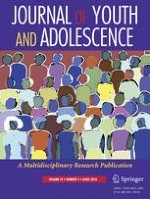10-05-2017 | Empirical Research
The Moderating Role of Spirituality in the Association between Stress and Substance Use among Adolescents: Differences by Gender
Gepubliceerd in: Journal of Youth and Adolescence | Uitgave 4/2018
Log in om toegang te krijgenAbstract
Adolescents are exposed to various stressors that may increase the risk for substance use. Due to the detrimental, and potentially long-lasting, effects related to substance use, it is necessary to explore more optimal coping strategies. This study explored the association between substance use and stress among male and female high school students in relation to spirituality as a moderator. To examine these relationships, the study used cross-sectional data collected from 27,874 high school students (Male = 50.7%, Female = 49.3%) across 58 high schools in Maryland that included an ethnically diverse sample (49% Caucasian, 30% African American) with an average age of 16 years old. Bivariate results showed differences in substance use, stress, and spirituality between male and female students. Higher rates of substance use were generally found among male students compared to female students; rates tended to be higher among female students for stress and spirituality compared to their male counterparts. Multilevel analyses indicated a positive association between stress and substance use among male and female students after adjusting for demographic and school-level factors. Both male and female students who reported turning to spiritual beliefs when experiencing problems were less likely to use substances. However, the interaction between stress and spirituality was significant for males only. These findings suggest that stress may increase the propensity for substance use and that spirituality might be a viable coping mechanism useful for helping high school students adapt to stressful circumstances and situations.
